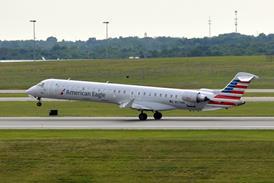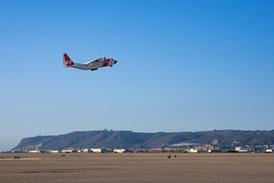Fairchild Dornier is looking at a range of different wing configurations to enhance the performance of the stretch 928JET, including the installation of winglets. At the same time, continuing efforts to address the baseline 728JET aircraft's weight are continuing.
"We're looking at winglets for the larger 928JET's wing," says Barry Ecclestone, Fairchild Dornier executive vice president business development. "We have been impressed by the body of evidence saying it gives you improved performance. We've not yet made a decision but, if we do, the first application will be the Envoy 7."
The first Envoy 7 business aircraft variant of the 728JET is due to be completed in August 2003 for delivery to Flight Options in second quarter 2004. Fairchild is evaluating five different winglet designs for the 928JET, including one from Aviation Partners. The aircraft is scheduled to make its maiden flight at the end of 2003 and enter service in early 2005.

Fairchild Dornier has just completed over 100h of wind tunnel testing, including high speed testing of a 1/12th scale half model of the 90-110-seat aircraft at DNW in the Netherlands to gather aerodynamic property and load data. A second series of low speed tests on a 1/23rd scale model was conducted at Stuttgart Technical University. This focused on the high lift system, consisting of trailing edge flaps and leading edge devices.
The company has not yet selected a partner to produce the enlarged 84.4m² (908.5ft²) wing it requires for the 928JET, but it is understood the work is likely to remain at EADS Casa. The Spanish manufacturer is already under contract to produce a 75m2 wing for the 70-80-seat aircraft. The larger aircraft will have an increased 9.83 aspect ratio and wider 26.81m span.
Design engineers have meanwhile identified up to 30 different areas in which to reduce the empty weight of the 728JET, which is 400-500kg (900-1100lb) over its design specification. The company has instigated a weight reduction programme and is confident it can meet the targeted maximum take-off weight (MTOW) in time for production of the first aircraft, scheduled for delivery to Lufthansa CityLine in July 2003.
"Alternatively we can raise the MTOW, recover that weight and still meet the payload range performance," says Ecclestone. There is an option to increase the MTOW to 35,990kg without impacting on the aircraft's landing fees. The downside, however, could be a degradation in the aircraft's 1,490m take-off field length, he concedes.
Source: Flight International























